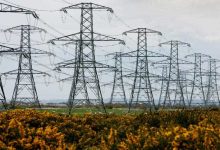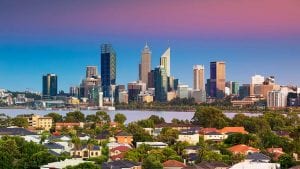To accompany our podcast with EnergyAustralia’s senior energy executive, Mark Collette – effectively the company’s No 2 – we’ve prepared this brief note.
EnergyAustralia is a 100% owned subsidiary of CLP, which is a generator, distributor and retailer of electricity based in Hong Kong and with wide generation operations in wind, coal and nuclear in China. CLP also has operations in India and smaller operations elsewhere in Asia as well as its business in Australia. Australia is an important contributor to group results.
EA sells about 18TWh of electricity in Australia, giving it about a 10 per cent share of the National Electricity Market. It also retails gas although it has no upstream gas exposure. Its main business, though, is generation.
It owns the oldest of Victoria’s three brown coal generators Yallourn, and the youngest of the black coal generators in NSW, Mt Piper, as well as a combined cycle gas operation in NSW Tallerwarra, and it recently acquired some older gas steam turbine operations in Victoria, formerly trading under the Ecogen banner and owns a couple of wind farms directly as well as contracting with others.
Under CEO Catherine Tanna the business has recovered substantially both in culture and profits from a terrible performance when flooding of the river near Yallourn and low electricity prices saw Yallourn’s book value written down to close to zero and the Wallerawang power station closed.
Of course blind Freddy would have seen profits increase on the back of higher power prices.
EA is looking to make a “final Investment Decisions” [FID] on the Cultana seawater pumped hydro development in South Australia, it has a heads of agreement to write a PPA with publicly listed Genex in Queensland on Genex’s Kidston pumped hydro and solar farm in outback Northern Queensland. Genex has hopefully started preliminary work on the proposal.
EA is likely to make a decision on that PPA this year. Mark Collette claims that Cultana could compete with gas in South Australia at current gas prices and when factoring in FCAS services.
However, both gas and Cultana also have to consider the South Australia/NSW interconnector which we see as certain to be built and in operation perhaps as early as 2022. Nevermind Snowy 2.0.
EA has/is also seriously considered building a new combined cycle gas generator in NSW.
A summary of recent six monthly results extracted from CLP results presentations is:

There is an issue with Dec 17 depreciation I need to sort out, but leaving that to one side we see about 100 K loss of electricity customers over 3 years, similar I guess to AGL and Origin, and a collapse of C&I gas volumes over the three yeas just like AGL. These guys, like AGL aren’t really in that business any more.
EBITDA also declined quite sharply in the Dec half, down 18%. Six monthly results do jump about but still….
The way EA presents the results its retail business where profits collapsed but we also see a trend of rising corporate expenses.
As with AGL in the end the opaqueness of transfer pricing between segments means that we tend to look at the overall results rather than the individual bits.
In terms of pool performance electricity price achieved had risen from a low of $28 MWh back in the June 2015 half to a peak of $90 MWh 18 months back. Pool prices tend to lead the contract market.

Note these numbers are for all EA’s current assets, not necessarily the ones they actually owned back in June 2015 half. Still, we think they reflect the pool outcomes reasonably well.
Looking forward, both Yallourn and Mt Piper have issues
Yallourn is the highest per MWh carbon emitter in the NEM. Development of variable renewable energy [VRE] in Victoria/South Australia and Tasmania continues. There are developing transmission opportunities but we expect NSW to somewhat restrict imports to leave a minimum level of coal generation at least for the next decade.
As a result ITK forecasts that as early as 2025 there may be very limited brown coal generation in the middle of the day, unless indeed wind or solar in the Southern Region is curtailed. This will vastly increase the ramping requirements for Yallourn and other brown coal generators. As a rule these assets are ill suited to ramping.
In NSW Mt Piper is a very flexible generator. Each of its two units has a minimum generation of about 160 MW according to Collette, and we used NEM Review to see that each unit has ramped up 500 MW over two hours, a record in NSW slightly better than what Eraring has achieved for any of its units.
So between the two Mt Piper unis they can add 1GW of dispatchable power in two hours. We also think they can probably, if reluctantly, do this on a daily basis without significant thermodynamic performance [we can hardly spell that word so better check for yourself]. Still this is more or less what expert advice to the “Garnaut Report” said back in the days of the carbon price.
So that’s a positive.
The negative is coal supply. Mt Piper is the most Westerly and Southerly of the NSW coal generators and currently gets virtually all its coal from Springvale coal mine.
Not only does this mine require special NSW legislation to operate at all following an adverse court reading over at the time illegal salt water discharges, but the mine is in any event due to close in 2024. The Springvale mine is building a water treatment plant but it’s a bit behind schedule. Still it is being built.
To get around Springvale closure, Mt Piper can either truck in coal or build a rail unloader. EA is seeking approval to modify the original rail unloader to a smaller one.
Even so it will require respectable capital expenditure and not something EA is rushing into. If rail unloader is built it will likely prolong the life of some local coal mines. Trucking in coal, in our view, would not really be a great outcome.
In short, for EA life is relatively good right now, but investors will likely still be concerned about the medium term prospects. Neither Cultana nor the Genex PPA will go within cooee of replacing Yallourn’s cash flows.
As with AGL, it’s one thing to make hay while the sun is shining and to muddle through year by year. It’s another thing to convince investors that ageing thermal assets have good long term futures or that EA has plans to fully replace the current cash flows of those assets.










